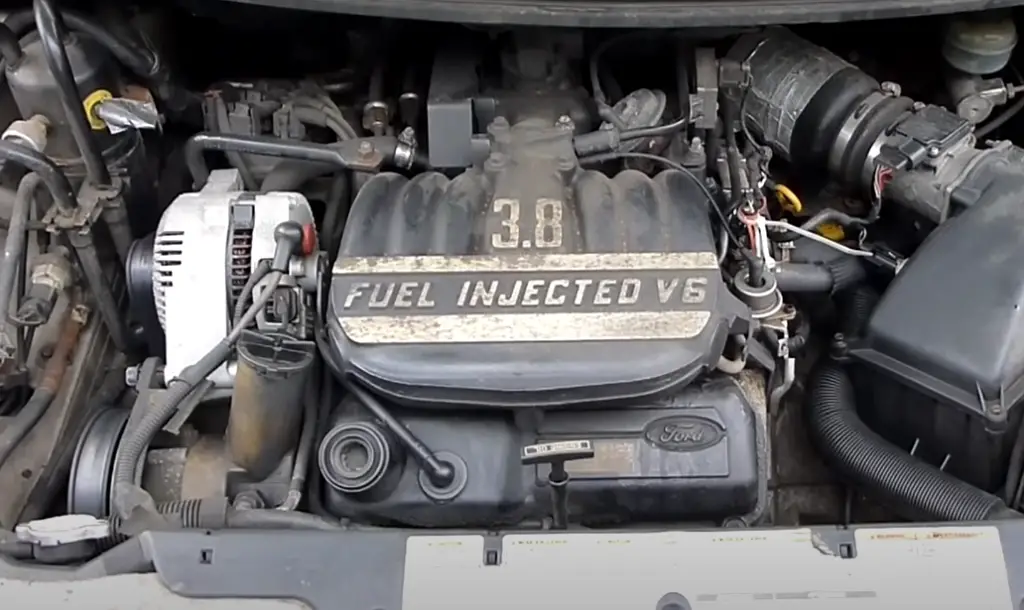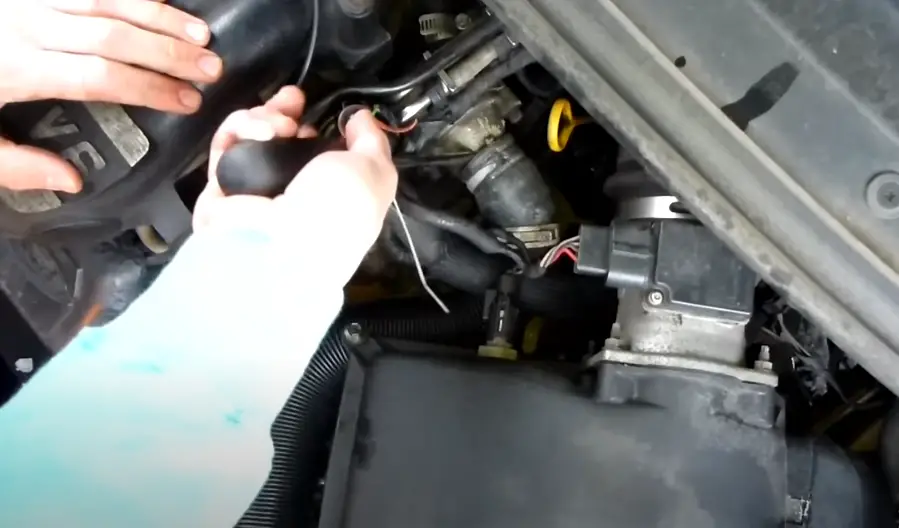Radiator hoses should be replaced every 4 to 5 years or whenever you notice signs of wear, such as cracks, swelling, or leaks. Regular inspections can help detect these issues early, preventing potential overheating and engine damage. Timely replacement ensures your vehicle’s cooling system remains in good working condition.
Radiator hoses are critical components of your vehicle’s cooling system, responsible for transporting coolant between the engine and radiator. Over time, these hoses can wear out, leading to potential leaks, overheating, and engine damage. Knowing when to replace your radiator hoses is essential for maintaining the health of your vehicle and avoiding costly repairs.

Contents
When to Replace Radiator Hoses?
Regular inspection of your radiator hoses is crucial for identifying signs of wear and tear. Here are some key indicators that it may be time to replace your radiator hoses:
1. Visible Cracks or Splits
One of the most obvious signs that a radiator hose needs to be replaced is the presence of visible cracks or splits on the surface. As hoses age, the rubber or silicone material can become brittle, leading to cracks that can cause leaks. If you notice any cracks or splits, it’s time to replace the hose immediately.
2. Swelling or Bulging
Swelling or bulging along the length of the hose is a sign of internal damage, often caused by high pressure or chemical exposure. A swollen hose is at risk of bursting, which can lead to a sudden loss of coolant and overheating. If you detect any unusual bulging, the hose should be replaced as soon as possible.
3. Soft or Spongy Texture
Radiator hoses should feel firm when you squeeze them. If a hose feels soft, spongy, or mushy, it’s a sign that the hose material is deteriorating. This can happen due to prolonged exposure to heat, oil, or other chemicals. A soft hose is prone to failure and should be replaced promptly.
4. Coolant Leaks
Leaking coolant is a clear sign of a problem in the cooling system, often caused by a damaged or failing radiator hose. If you notice puddles of coolant under your vehicle or around the engine bay, inspect the hoses for cracks, splits, or loose connections. Even a small leak can lead to significant engine damage if not addressed.
5. Abrasion or Wear Marks
Hoses that are in contact with other engine components can develop wear marks or abrasions over time. This can weaken the hose material and lead to leaks or bursts. If you see any signs of abrasion, it’s advisable to replace the hose and ensure that it is properly routed to avoid contact with other parts.
6. Age of the Hoses
Even if there are no visible signs of damage, it’s recommended to replace radiator hoses every 4 to 5 years as part of routine maintenance. Over time, the hose material can degrade due to heat and chemical exposure, increasing the risk of failure. Replacing the hoses at regular intervals can prevent unexpected breakdowns.
Why Timely Replacement Is Important
Failing to replace worn-out radiator hoses can lead to a range of problems, some of which can be severe:
1. Engine Overheating
A damaged radiator hose can cause coolant to leak, leading to insufficient coolant levels in the engine. Without enough coolant, the engine can quickly overheat, which can cause significant damage to the engine block, head gasket, and other components. In extreme cases, overheating can lead to engine failure.
2. Coolant Loss
Leaking hoses can result in a gradual loss of coolant, which may not be immediately noticeable. Over time, this can lead to low coolant levels, reducing the cooling system’s efficiency and increasing the risk of overheating. Regular checks and timely replacement of hoses can prevent coolant loss and maintain the system’s integrity.
3. Potential Engine Damage
If a radiator hose bursts while driving, it can result in a sudden and complete loss of coolant. This can cause the engine to overheat rapidly, potentially leading to catastrophic engine damage. Replacing hoses before they fail can prevent such costly repairs.
4. Costly Repairs
The cost of replacing a radiator hose is relatively low compared to the potential cost of repairing an overheated engine. Preventative maintenance, including regular hose replacement, is a cost-effective way to avoid expensive repairs down the line.
How to Replace Radiator Hoses
Replacing radiator hoses is a relatively straightforward process that can be done by a skilled DIYer or a professional mechanic. Here’s a step-by-step guide:
1. Prepare the Vehicle
- Ensure the engine is cool before starting the replacement process.
- Disconnect the negative battery terminal to prevent electrical shorts.
- Drain the coolant from the radiator by opening the drain valve or removing the lower radiator hose.
2. Remove the Old Hoses
- Use a pair of pliers or a hose clamp tool to loosen and remove the clamps securing the radiator hoses.
- Carefully twist and pull the hoses off the radiator and engine fittings. If the hoses are stuck, a hose removal tool can help.
3. Inspect the Fittings
- Before installing the new hoses, inspect the radiator and engine fittings for corrosion or damage. Clean the fittings if necessary to ensure a tight seal.
4. Install the New Hoses
- Slide the new hoses onto the radiator and engine fittings. Ensure they are seated properly.
- Secure the hoses with new hose clamps, tightening them to ensure a snug fit without over-tightening, which could damage the hose.
5. Refill the Cooling System
- Refill the radiator with the appropriate type and mixture of coolant.
- Bleed the cooling system to remove any air pockets, which can cause overheating.
6. Check for Leaks
- Start the engine and let it run until it reaches operating temperature.
- Check the new hoses and fittings for any signs of leaks. Tighten the clamps if necessary.

Best Practices for Radiator Hose Maintenance
Maintaining your radiator hoses is key to ensuring the longevity and reliability of your vehicle’s cooling system. Here are some best practices:
- Regular Inspections: Check your radiator hoses during routine maintenance or oil changes. Look for signs of wear, leaks, or damage.
- Keep the Engine Clean: A clean engine bay reduces the risk of dirt and debris damaging the hoses. Regularly clean the area around the radiator and engine.
- Use the Correct Coolant: Always use the coolant recommended by your vehicle’s manufacturer. Incompatible coolant can cause hose deterioration.
- Replace in Pairs: If one hose needs replacement, it’s often a good idea to replace both the upper and lower hoses at the same time, as they typically age at the same rate.
- Monitor Coolant Levels: Regularly check your coolant levels and top up as necessary. Low coolant levels can indicate a leak, possibly from a damaged hose.
Frequently Asked Questions
Here are some FAQs about the radiator hose replacement –
1. How often should radiator hoses be replaced?
Radiator hoses should be replaced every 4 to 5 years or whenever signs of wear, such as cracks, swelling, or leaks, are detected. Regular inspections during routine maintenance can help identify when replacement is needed.
2. Can I drive with a leaking radiator hose?
It’s not advisable to drive with a leaking radiator hose, as this can lead to a loss of coolant and cause the engine to overheat. If you suspect a leak, have the hose replaced as soon as possible to avoid potential engine damage.
3. What happens if a radiator hose bursts while driving?
If a radiator hose bursts while driving, it can cause a sudden loss of coolant, leading to rapid engine overheating. This can result in significant engine damage if not addressed immediately. Pull over, turn off the engine, and have the vehicle towed for repairs.
4. Can I replace radiator hoses myself, or should I see a mechanic?
Replacing radiator hoses is a task that many DIY enthusiasts can handle with the right tools and knowledge. However, if you’re not comfortable working on your vehicle, it’s best to have a professional mechanic perform the replacement to ensure it’s done correctly.
5. What type of radiator hoses should I use as replacements?
Always use hoses that meet or exceed the original equipment manufacturer (OEM) specifications for your vehicle. High-quality rubber or silicone hoses are generally recommended, depending on your vehicle’s needs and the conditions it will be exposed to.
Conclusion
Replacing radiator hoses is a vital aspect of vehicle maintenance that can prevent overheating, engine damage, and costly repairs. By understanding the signs of wear, regularly inspecting your hoses, and knowing when to replace them, you can keep your vehicle’s cooling system in top condition.